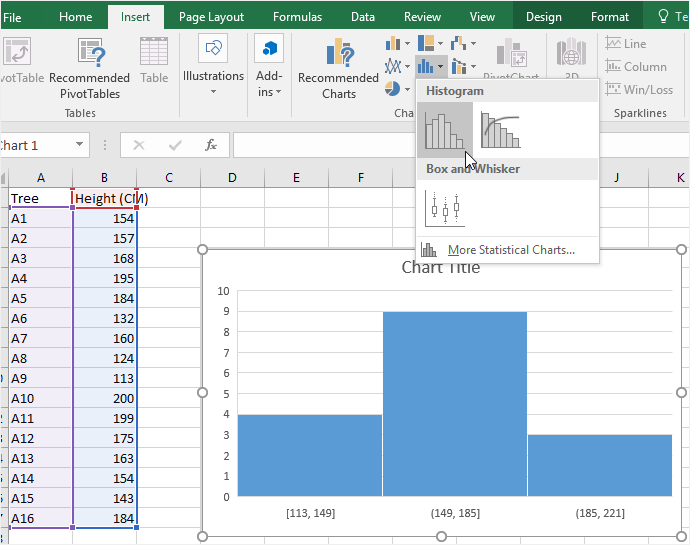

If you'd like to display the bar values, click the Chart Elements button on the right side of the chart, select the Data Labels check box, and choose where you want to place the labels: Switch to the Design tab, and experiment with different chart styles and colors:īy default, a Pareto graph in Excel is created with no data labels. Design the Pareto chart to your likingĬlick anywhere in your Pareto chart for the Chart Tools to appear on the ribbon. You can change the colors and style, show or hide data labels, and more. The Pareto chart created by Excel is fully customizable. The only improvement that you'd probably want to make is to add/change the chart title: That's all there is to it! The Pareto chart is immediately inserted in a worksheet. Switch to the All Charts tab, select Histogram in the left pane, and click on the Pareto thumbnail.On the Insert tab, in the Charts group, click Recommended Charts.In most cases it is sufficient to select just one cell and Excel will pick the whole table automatically. To make a Pareto graph in Excel, please follow these simple steps: All you need to have is a list of items (issues, factors, categories, etc.) in one column and their count (frequency) in another column.Īs an example, we are going to do Pareto analysis of typical user complaints about software based on this data set: Plotting a Pareto diagram in modern versions of Excel is easy because it has a built-in Pareto chart type. How to make a Pareto chart in Excel 2016 - 365 Below you will find the detailed instructions on how to create a Pareto diagram in different versions of Excel. Here's what a typical Excel Pareto chart looks like:Īs you see, the Pareto graph highlights the major elements in a data set and shows the relative importance of each element for the total. The bars, plotted in descending order, represent the relative frequency of values, and the line represents cumulative total percentage. In Microsoft Excel, it is kind of sorted histogram that contains both vertical bars and a horizontal line. Pareto chart, also called a Pareto diagram, is a graph based on the Pareto principle.

To identify the most significant factors that you should focus on, you can draw a Pareto chart in your Excel worksheet. In software, 20% of bugs cause 80% of errors and crashes.In medicine, 20% of patients are reported to use 80% of health care resources.In economy, the richest 20% of the world's population control about 80% of the world's income.Here are a few practical examples of the Pareto principle: Which is why, the Pareto principle is sometimes called the 80/20 rule. And this principle states that for many events about 80% of the effects come from 20% of the causes. Pareto analysis is based on the Pareto principle, named after Italian economist Vilfredo Pareto.


 0 kommentar(er)
0 kommentar(er)
